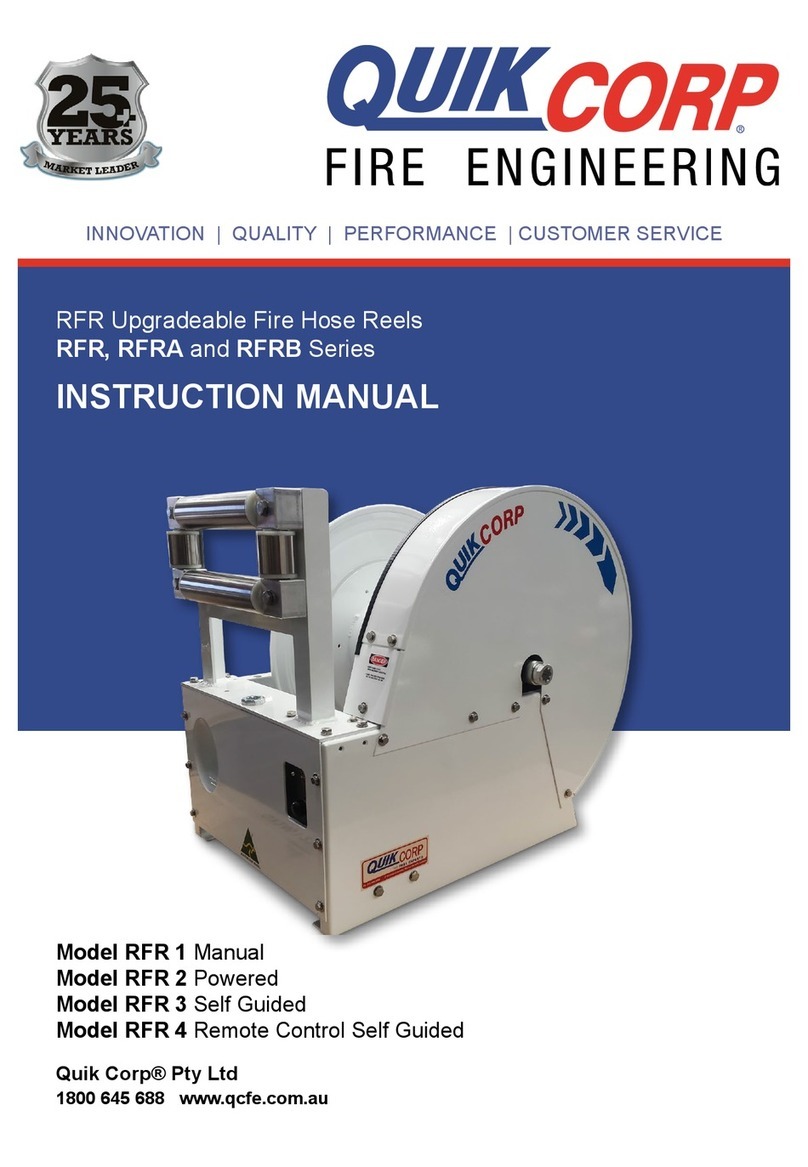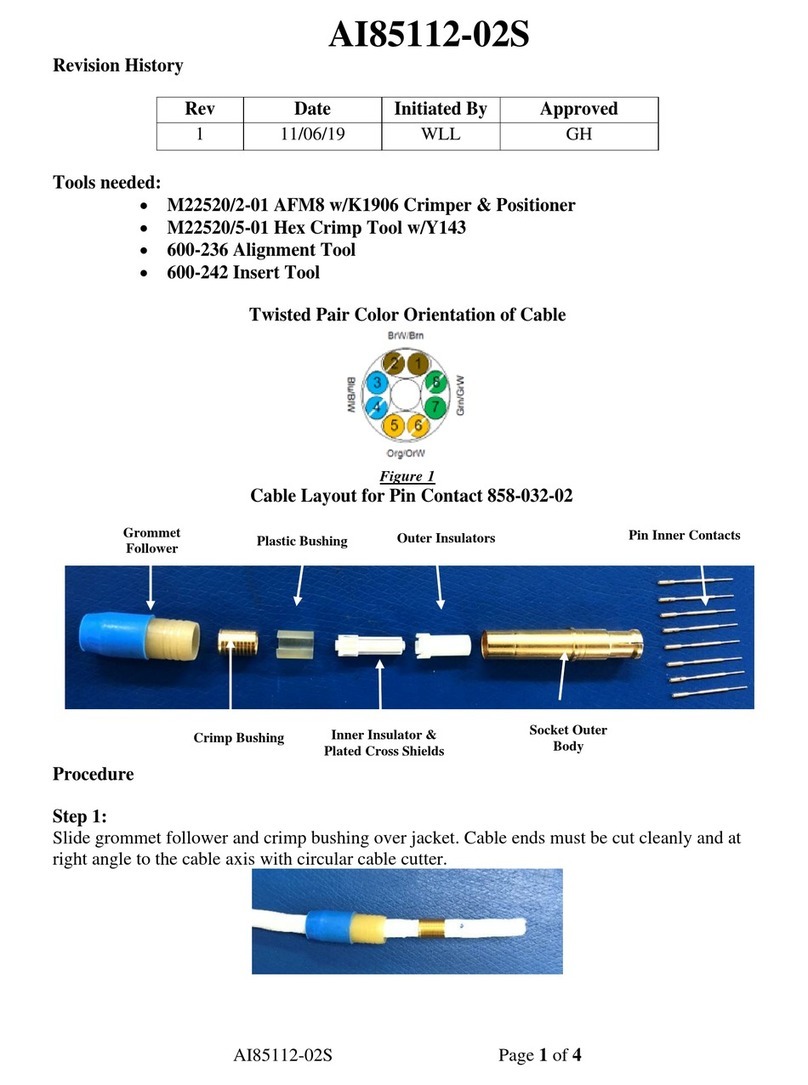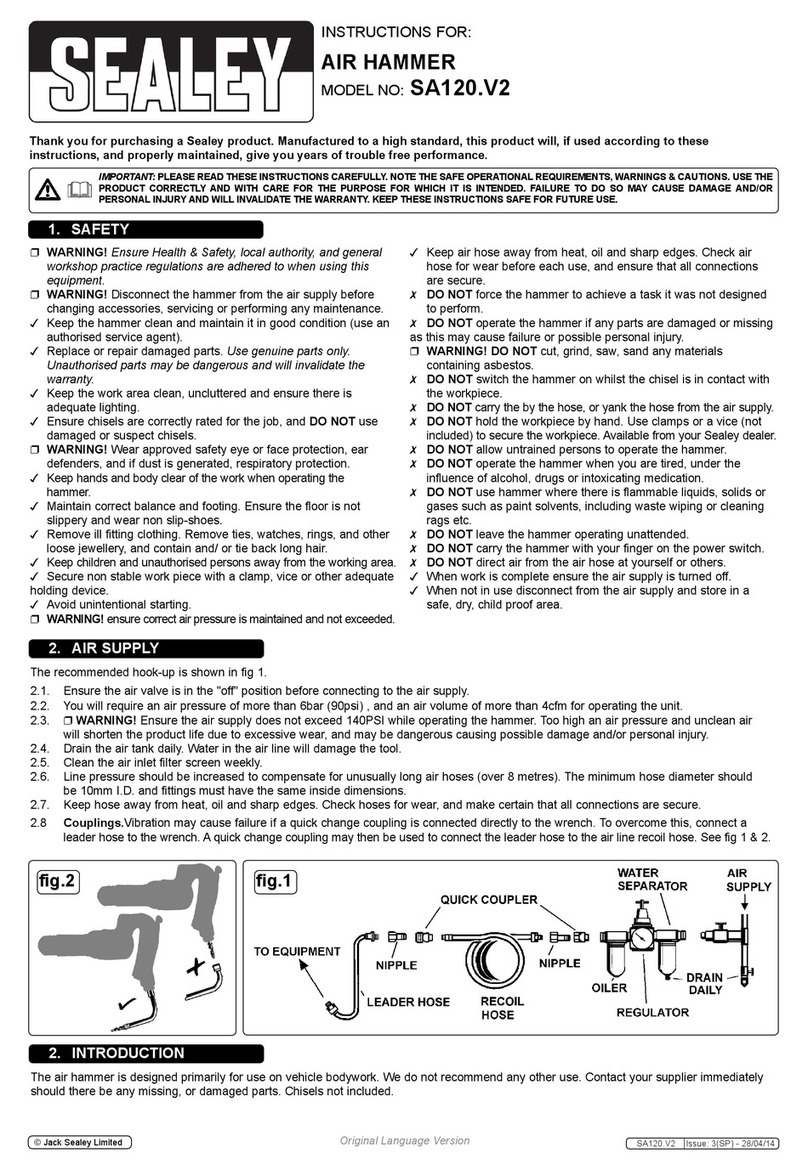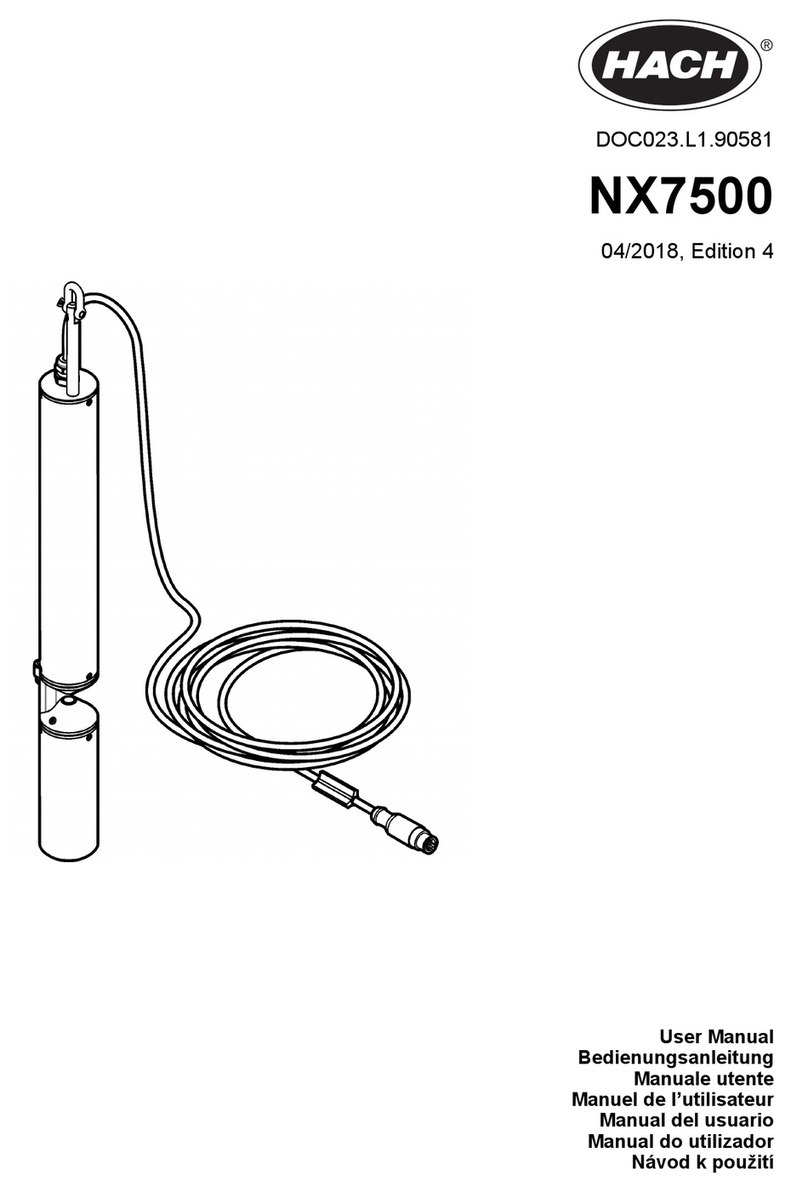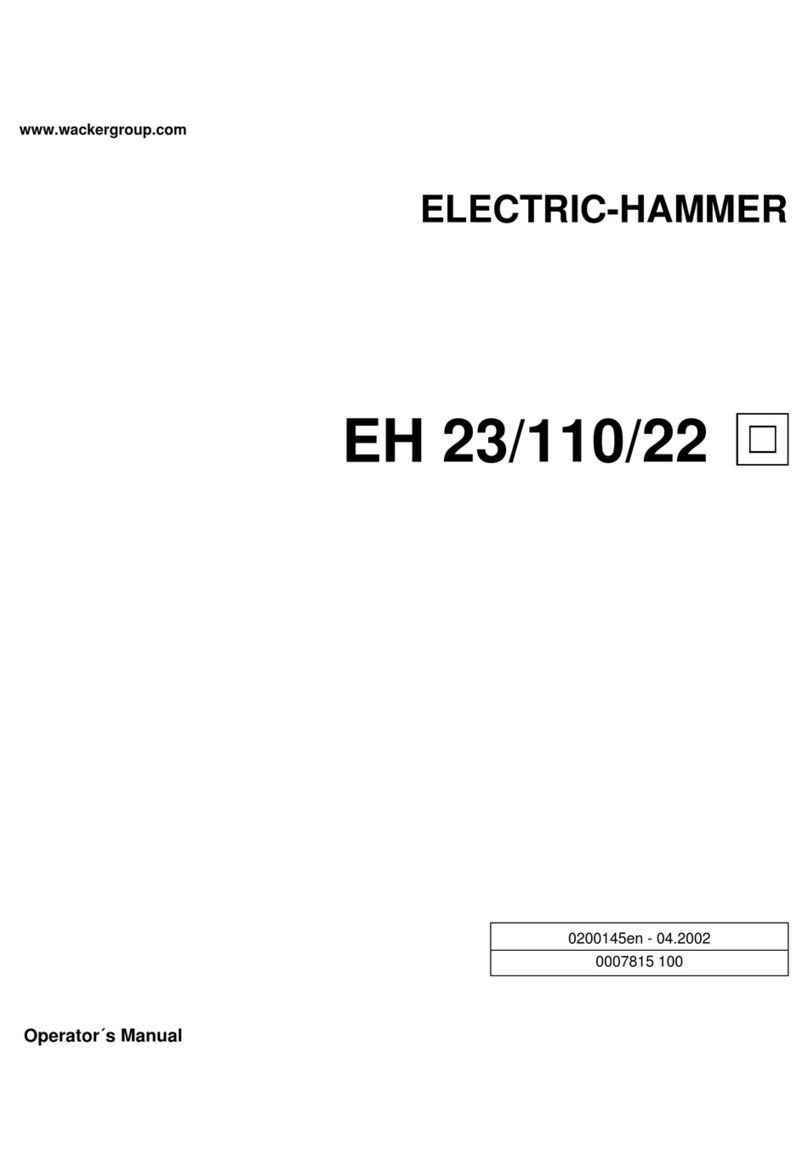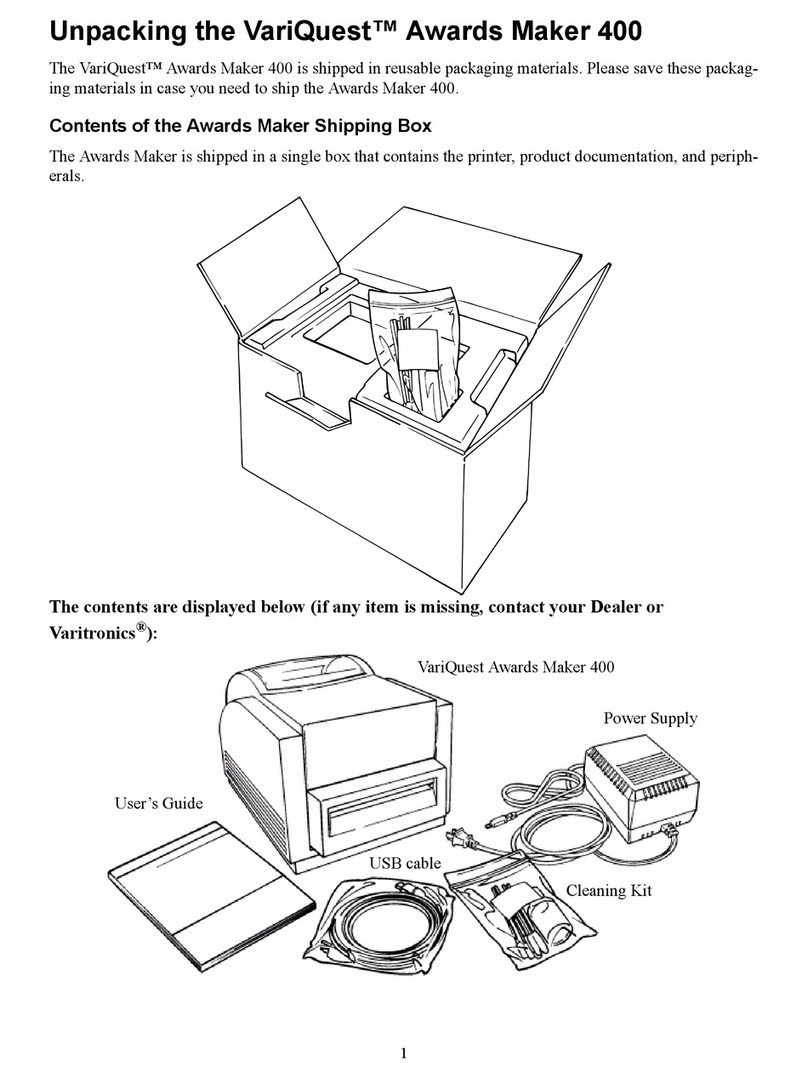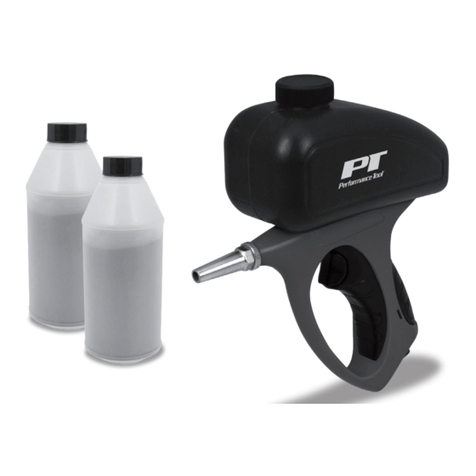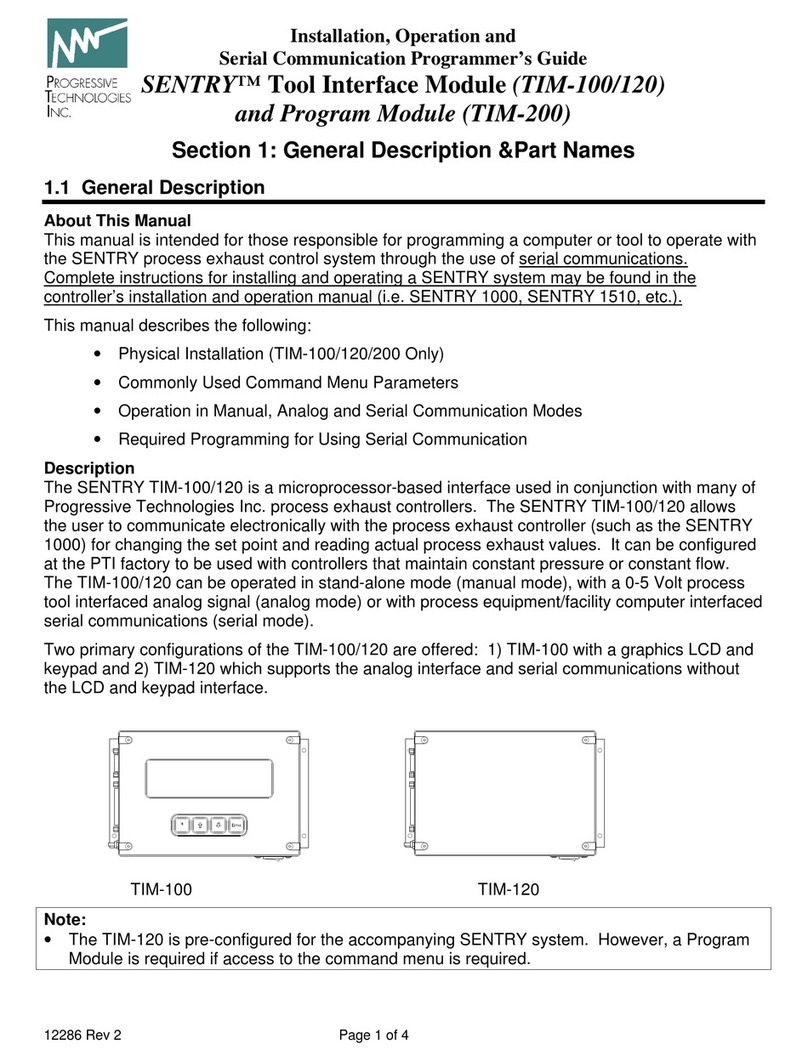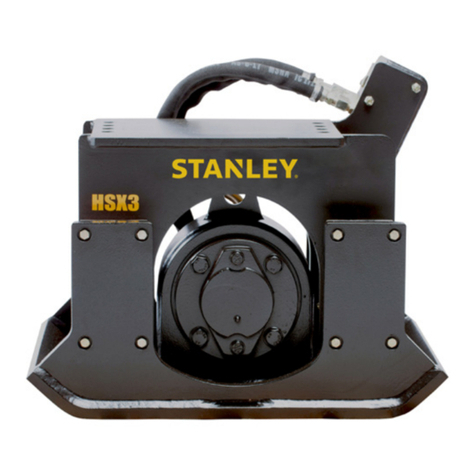General Wire Spring General Cold-Shot User manual

Operating Instructions for
General Cold-Shot™
F
or 1/8" to 2" (10-60 mm) Metal and Plastic Pipes
Your Cold-Shot pipe freeze kit is
designed to give you years of trouble-free,
profitable service. However, no tool is better
than its operator. We therefore suggest you
read these instructions through carefully
before using your machine on the job. This
will enable you to operate the Cold-Shot more
efficiently and more profitably. Failure to
follow these instructions may cause personal
injury to operator or damage to equipment.
Basic Safety Instructions
Only use the Cold-Shot for the purpose for
which it was intended, with due attention to
the general safety and accident prevention.
Keep the work area clean. Clutter can be
dangerous.
Avoid dangerous flammable liquids or gases.
Provide adequate lighting at the workplace.
Wear suitable work clothes, keep long hair clear, take off jewelry and similar items.
Use personal safety equipment (e.g. safety glasses, rubber gloves).
Clamp the work piece securely; do not hold by hand.
Check the unit occasionally for damage, and to see that it is operating correctly.
Replace worn parts as early as possible.
Only use genuine GENERAL spare parts and accessories, for personal safety
reasons, to ensure correct operation of the Cold-Shot, and to preserve the basis for
the warranty claim.
All repair work must be performed only by an authorized repair facility.
Any unauthorized modifications of the Cold-Shot are prohibited for safety reasons
and will void the warranty.
Specific Safety Instructions
Carbon dioxide must be drawn from the cylinder in a liquid state in order to produce
dry ice. For this reason, only cylinders equipped with a dip tube may be used.
Do not connect a pressure reducer to the cylinder.
Keep the cylinder in an upright position and secure it to prevent it from falling over.
The carbon dioxide cylinder must not be emptied completely.

Do not interfere with nozzles, freeze heads or valves, including cylinder valves.
Work only in a well ventilated area. Carbon dioxide is non-toxic and non-
flammable but it is heavier than air and can therefore collect at ground level and
displace the air if ventilation is inadequate, giving rise to the danger of suffocation.
Wear eye protection or goggles.
Wear gloves.
Do not work with an open flame within 2 ft. (50 cm) of the freezing point.
Never hit a chilled freeze head with a hammer or other tool. A sharp blow will cause
it to fracture.
Keep other people, particularly children, well away. Dry ice causes burns if it comes
into contact with the skin. Once work is complete, any remaining dry ice in the
freeze heads must be carefully disposed of or placed in a covered refuse container.
Observe the safety instructions provided by the carbon dioxide supply company.
How the Cold-Shot Works
The Cold-Shot can be used to freeze all types of liquids, even at high pressure,
inside steel, copper, cast iron, lead, aluminum and plastic pipe in sizes ranging from
1/8" to 2" (10-60 mm).
The Cold-Shot uses commercially available carbon dioxide (CO²). You can
purchase or rent cylinders through your local welding supply house. Though any size
cylinder can be used, it is recommended that users purchase the largest cylinder size
possible. Note: the CO² tank must have a dip tube. The dip tube allows liquid rather
than gas to flow through the spiral hoses were it will expand to form Dry-ice inside the
freeze heads.
The ice pack which forms in the pipe is capable of withstanding a pressure of
approximately 7000 psi (500 bar). As the liquid freezes, a layer of frost will develop on
the surface of the pipe.
Preparation
1. Remove the seal from the carbon dioxide cylinder.
2. Screw connector with T-distributor on to cylinder (right-hand thread).
3. Screw spiral hoses on to the
T-distributor. (Fig. 1)
4. Choose freeze heads which
correspond to the size of the pipe to
be frozen.
2

5. Place the freeze heads on the pipe and secure by tightening the knobs evenly,
using hex head wrench provided, to give a firm but not over tight hold. (Fig. 2)
6. Push each injector into the bore of the
freeze head until it is completely
inserted and resting against the stop,
then turn clockwise one quarter turn to
lock in place. (Fig. 3).
Operation
1. The liquid in the pipe can only be frozen
when it is no longer flowing. All pumps must
therefore be stopped and no liquid allowed to
escape from the pipe. Allow water to cool to
room temperature before freezing.
2. Fully open the cylinder valve. The amount
of carbon dioxide required is controlled
automatically. The liquid carbon dioxide
expands in the injector and forms dry ice
inside the freeze head with a temperature of
-110 F°(-79°C) and freezes the liquid
within the pipe.
3. After a brief period, frost will form on the pipe in the vicinity of the freeze heads.
(See table) If frost does not form in accordance with time given in the table, then
this indicates that the liquid within the pipe is still flowing or the water is too warm.
(Check that all pumps have been switched off and prevent any removal or outflow
of liquid)
4. While work is in progress, the flow of carbon dioxide refrigerant must be
maintained. To ensure a sufficient supply of refrigerant is available, a stand-by
cylinder is suggested. The only way to determine the amount of remaining carbon
dioxide is to weigh the cylinder. If it is necessary to change the cylinder during
work, it is essential that this procedure should be compete within 7 minutes to
prevent the ice pack from melting.
5. Once work is complete, close the cylinder valve and wait until the pressure in the
spiral hoses has returned to normal before removing them from valve. Once the
ice pack has completely melted, carefully unscrew and remove the injector at the
end of the spiral hoses from the freeze head, then remove the freeze head from
the pipe.
3

Freezing times
The freezing times and carbon dioxide requirements given in the table below are
only to be regarded as general guidelines and are valid for a water temperature of
approximately 68 F°(20°C). The freezing times and refrigerant consumption
values will therefore vary for other temperatures. For freezing liquids in plastic
pipes much longer freezing times are generally required.
Freeze head size Material Freezing time Carbon dioxide
requirement
Number of
freezing
operations
possible per
20 lbs (10 kg)
cylinder per freeze
head
1/8" (10 / 12 mm) steel
copper
1 min.
1 min.
2 oz (60 g)
2¼ oz (65 g)
165
160
1/4" (15 mm) steel
copper
1 min.
2 min.
2½ oz (75 g)
4¾ oz (135 g)
130
75
3/8" (18 mm) steel
copper
2 min.
3 min.
5¼ oz (150 g)
7 oz (200 g)
65
50
1/2" (22 mm) steel
copper
3 min.
5 min.
8 oz (225 g)
11¾ oz (330 g)
45
30
3/4" (28 mm) steel
copper
5 min.
7 min.
12¼ oz (350 g)
15¾ oz (450 g)
29
22
1" (35 mm) steel
copper
7 min.
10 min.
17¾ oz (500 g)
23 oz (650 g)
20
15
1-1/4" (42 mm) steel
copper
11 min.
14 min.
24½ oz (700 g)
31¾ oz (900 g)
15
11
1-1/2" (54 mm) steel
copper
16 min.
24 min.
37 oz (1050 g)
51 oz (1450 g)
10
7
2" (60 mm) steel 29 min. 67 oz (1900 g) 5
Carbon Dioxide
Friendly to the environment: No.
C.F.C.
Important!
Only use cylinders with dip tube.
Important!
Insert Injector into the bore of
freeze head and rotate 1/4 turn
to lock in place.
General Wire Spring Co.
1101 Thompson Avenue
McKees Rocks, PA 15136
412/771-6300 Fax: 412/771-2771
C-CS-0504
4
Popular Tools manuals by other brands
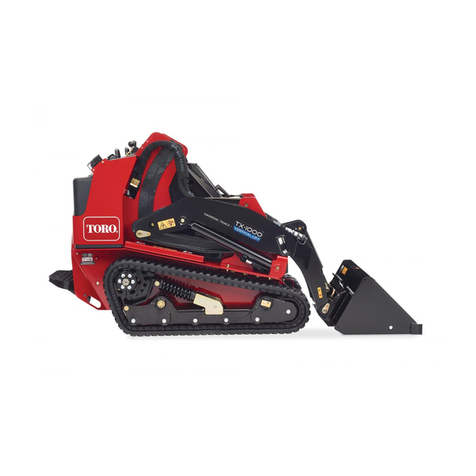
Toro
Toro TX 1000 installation instructions
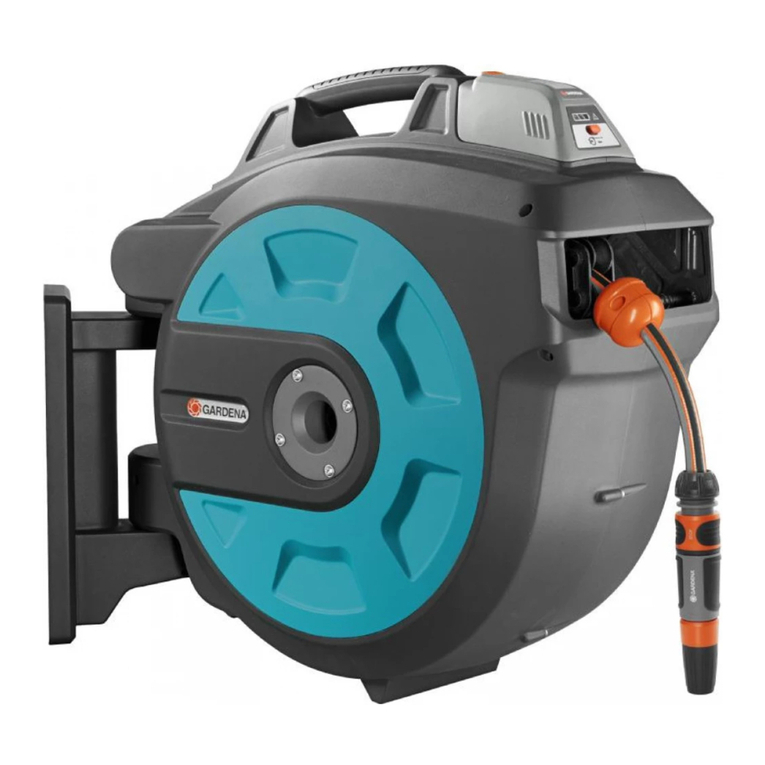
Gardena
Gardena 35 user manual
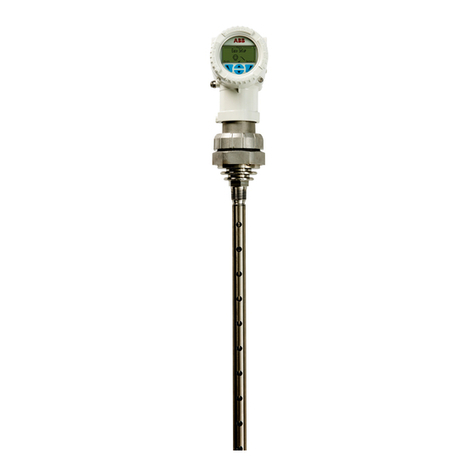
ABB
ABB LWT300 series quick start guide

Gage Bilt
Gage Bilt GB2581WS Original instructions

ULTIMATE SPEED
ULTIMATE SPEED KH 3017 HYDRAULIC CAR JACK Operation and safety notes
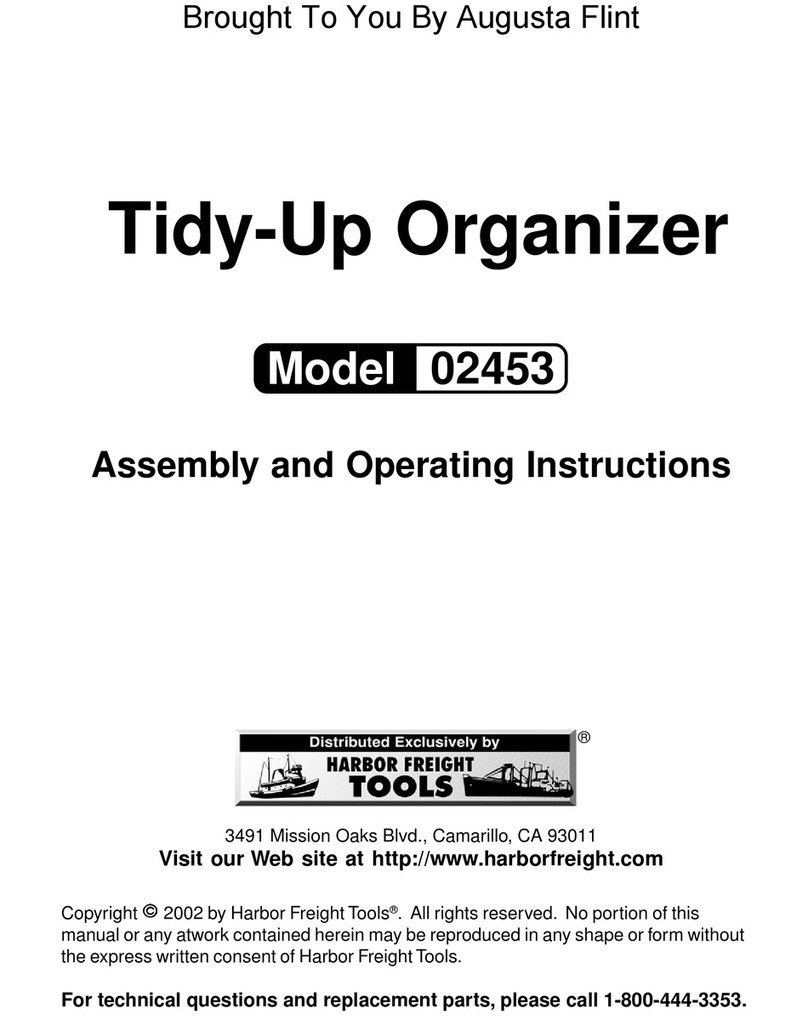
Harbor Freight Tools
Harbor Freight Tools Tidy-Up Organizer 02453 Assembly and operating instructions
